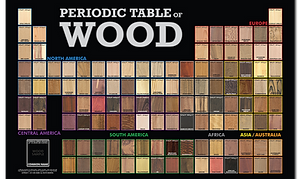WOOD IDENTIFICATION
We've compiled some of the best resources available to help you answer the question: "What kind of wood is this?" Check these out and you're always welcome to ask your questions in our TWG Facebook Group.
TWG's Official Wood Identification Partner
Eric Meier found that most wood identification books available to the public were just too vague and limited. So, in 2007, Eric began a journey that has resulted in one of the best wood identification tools anywhere. Eric's database, "The Wood Database", not only has a Wood Filter but he has also created several resources to help you know what wood you're working with. His website is full of incredibly useful articles, pictures, examples, and guides.
TWG is a proud partner of Eric Meier's work! Check out his website and consider buying his book and charts as all proceeds go to helping his work continue and grow.
Eric Meier
Other Wood Identification Tools:
USDA's Forest Service Forest Products Laboratory: Center for Wood Anatomy Research
How It Works
-
You send them a wood sample.
-
Their experts examine the sample using tools like hand lenses and microscopes.
-
They identify the type of wood based on its unique cellular structure.
-
They send you the results, usually within four weeks.
American Hardwood Information Center
This Guide features 20 of the most abundant and most often used Hardwood species. In addition to the basics – where they grow, general description, and abundance – each Hardwood profile includes working and physical properties, availability, strength and mechanical properties, and main uses.
Additionally, each species is shown in clear, light, medium and dark finishes to help visualize stain combinations of flooring, cabinetry, moulding and furniture co-existing in a single design space.
The Wood Explorer Database
Most of the data for the database was assembled in the early 90's, in an effort to create the world's most complete encyclopedia on commercial wood species. This was a non-profit project involving some 30 data-entry people collecting, organizing information from more than 1,200 wood books, periodicals, research papers, and expert woodworkers around the world.
Wood books bought online or at bookstores rarely cover more than 300 species, and cost in excess of $20 each. The Wood Explorer covers 1,650 species in great depth. Many of their wood images originated from an exclusive contract they had with the U.S. Forest Products Laboratory, and are not available anywhere else.
The Wood Explorer has apps for both Android and Apple devices. Full access does require a monthly or yearly subscription.




